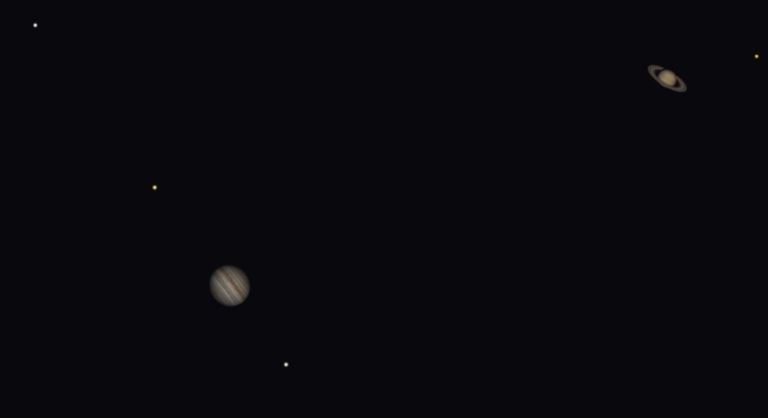Any of those "regular" conjunctions is still fun to watch, as both planets shine with negative magnitudes in the night sky, meaning that they are among the brightest objects, and their proximity makes them look like a bright "double star". Jupiter in fact usually is the brightest of all light sources that appear point-like to the naked eye, when Venus is not around. Saturn instead is on par with the brightest stars, its magnitude also depending significantly on the angular tilt of its ring system.
Yet, what we are talking about here is the two planets getting so close that even in a high-magnification instrument they comfortably fit within the same field of view. Such an event happens very, very rarely. The last time something similar happened, in fact, was in 1623!
The site https://www.space.com/great-conjunction-jupiter-saturn-2020-fun-facts has a great deal of detail on the conjunction, so I will spare myself the pain of reporting the same information. What I do wish to say is that the observation of these days' conjunction is really much more spectacular than I had expected. This evening, just after sunset, I went out with a pair of 25x100 binoculars, and was able to catch Jupiter and Saturn low in the horizon just minutes before they disappeared behind a layer of clouds. The view through the relatively low-magnification instrument was however fantastic: in the same field of view I could nicely see Jupiter, with minimal detail on its disk, and Saturn, with the rings very small but definitely visible.
What is inspiring is that by seeing them together, and realizing that one of them is farther than the other by a few further hundred million kilometers, you get a real three-dimensional feeling of the relative position of these bodies in the solar system. Also, the relative tilt of the rings with respect to Jupiter's satellites makes the three-dimensionality even more interesting.
Below is a simulated view of the conjunction, as can be seen through a telescope. It's a bit unfortunate that, due to the low altitude of the two planets in the evening sky, I cannot point them with my Dobson 16-incher. But already the view through the big binoculars was excellent.

[Image credit: news.gazette.com].
I heartily suggest that you step out tonight (if you are in the US you still have some time before sunset) or tomorrow, or the day after. The two planets will linger around one another for a couple more days (the actual closest point is reached on December 21). And if you do, don't forget to drop a note in the comments thread below, to let me know what you saw!





Comments